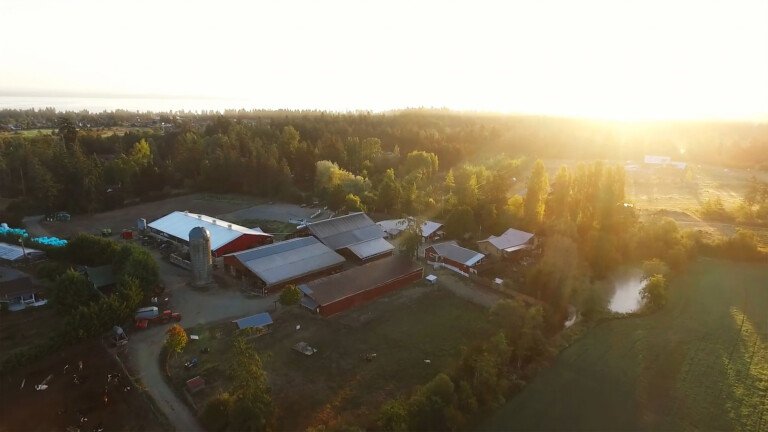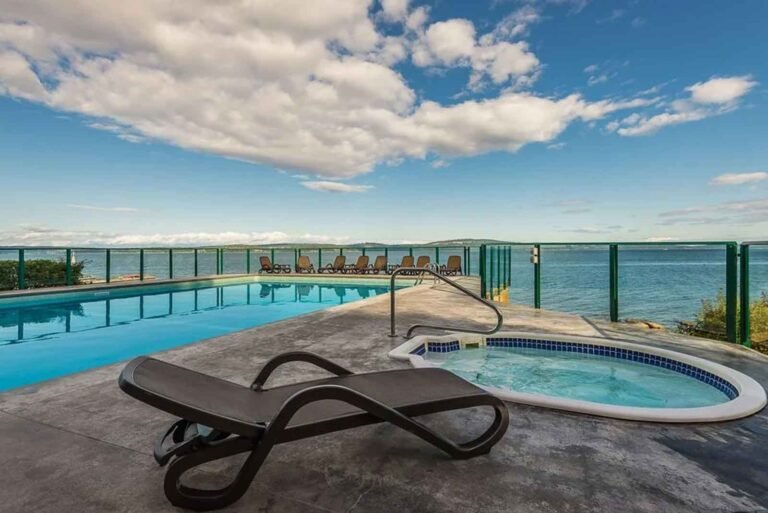Kayaking the Broken Group Islands
The Broken Group Islands Unit consists of over 100 islands, islets and rocky outcrops scattered in the centre of Barkley Sound, between Loudoun Channel and Imperial Eagle Channel, and totals 10,607 hectares, of which only 1,350 hectares is land. The popularity of these islands with paddlers and boaters has soared over the past decade. The Broken Group Islands provide a true west coast kayaking experience in sheltered water.
The area is not normally subject to the extreme ocean conditions farther west in the open waters around Ucluelet and the exposed sections of the West Coast Trail and the Long Beach Units of Pacific Rim Park. The ease with which less-experienced sea kayakers can reach the Broken Group Islands on the MV Frances Barkley from Port Alberni and Ucluelet contributes greatly to their allure and charm.
The Broken Group is known internationally for awesome kayaking and wilderness camping enjoyed by organized adventurers seeking escape to the remote and desolate islands within the park. Natural features of this tranquil group of islands include lagoons, sandbars, blowholes, arches and secluded anchorages. Ancient native middens, village fortifications, stone fishtraps and archaeological sites stimulate the imagination of visitors to this traditional territory of the Nuu-chah-nulth people.
Kayakers usually begin their exploration at Gibraltar Island and make their way through the chain, stopping at campsites on Gilbert, Clarke, Turret, Willis, and Hand Islands. All of these sites are easily reached within a day’s paddle (or less) of each other. Camping is also allowed on Gibraltar Island and Dodd Island. The larger of the forested islands are Effingham, Turret, Turtle, Dodd, Jacques, Nettle and Gibraltar Island.
Camping was discontinued on Benson Island in May 2009 out of respect for its cultural significance. Archaeological research dates traditional use of Benson Island for over 5,000 years. Tseshaht First Nation’s oral traditions name this site as their origin place where the first Tseshaht man (Naasiya’atu) and woman (Naasayilhim) were created. It became the site of their principal village of Ts’ishaa. It is from this village that the Tseshaht derive their name, as Tseshaht literally means “people of Ts’ishaa”. Visitors are encouraged to visit Benson Island during the day and return to designated campsites for the night.
Numerous kayak operators lead tours through the Broken Group Islands – see listings on this page.
Canoe and kayak access to the Broken Group Islands from Bamfield or Ucluelet is not recommended due to the exposed passages. Boaters and ocean paddlers can access the Broken Group Islands via Toquart Bay in northwest Barkley Sound. The unsigned road turnoff is located about 12 km northeast of the junction of Highway 4 and the Tofino-Ucluelet Highway.
A BC recreation campsite is located at Toquart Bay on the North side of Barkley Sound providing a boat launch for access to the islands. The popular Torquart Bay Recreation Campsite sees a lot of traffic from kayakers heading over to the Broken Islands. There are about 15 oceanside open tent sites, as well as RV areas, a cement boat launch, and lovely south-facing sand beaches. There is a parking fee for those who wish to park at the site but not camp there. From Port Alberni follow the Pacific Rim Highway 4 for about 50 miles (80 kms). Turn left at the sign for Torquart Bay on to the Maggie Lake Forest Service Road and follow it for 15.5 km.
The MV Frances Barkley will transport paddlers, kayaks and canoes to Sechart, on the fringe of the Broken Group Islands. The passenger and cargo vessel is based in Port Alberni, and travels between Port Alberni, the Broken Group Islands, and the fishing ports of Ucluelet and Bamfield during the spring, summer and fall. In the course of a day’s trip the sturdy wooden packet freighter drops mail, groceries, supplies, and the occasional passenger along the way at float homes and the Sechart Whaling Station. If you must visit here in July and August, be sure to reserve space for your kayak or canoe on deck well in advance.
Visitors should note that paddlers are increasingly being blamed for the trashiness around many of the more popular campsites. Except at the seven designated camping sites, garbage and toilet facilities are nonexistent, which should be a major consideration for visitors. Plan how you’re going to deal with these factors in advance of your journey here so as not to further tarnish an already dire situation.
Practice random acts of kindness by removing litter where you find it as well as packing out all of your own refuse. Consult books such as How to Shit in the Woods by Kathleen Meyer to learn new approaches to the delicate subject of backcountry hygiene. Consider adventuring here in any month other than July and August, particularly if you value solitude.
Paddling the Nitinat Triangle
The Nitinat Triangle is a wilderness area, heavily wooded with old-growth temperate rainforest. The portage trails are extremely rough, with massive fallen trees, steep banks and muddy, slippery footing. This trip is not recommended for novice paddlers. Paddlers must be totally self sufficient, competent and be able to handle any emergency situation. Familiarity with international distress signals is recommended in such a remote wilderness environment. Starting at the head of Nitinat Lake, a return trip should take approximately four or five days.
The Pacific Rim Explorer by Bruce Obee is a valuable reference on this canoe route along with the essential topographical maps 92C/15 (1:50 000) or the smaller scale map 92C/NE (1: 125 000). The maps are available from Maps BC in Victoria, telephone 250-387-144.
There is logging road access from Duncan via Cowichan Lake to the head of Nitinat Lake. The nearest boat launch is at Knob Point, located on the northwest side of the lake.
All paddlers canoeing the Nitinat Triangle must register and obtain a free park use permit. Please contact Parks Canada in advance to make arrangements. Group size is limited to ten.
The most travelled route is a combination of canoe paddles and portages. Portage conditions are most difficult. Begin by portaging from Nitinat Lake to Hobiton Lake. Do not use the Hobiton River, as it is a salmon spawning stream that is permanently closed by the Department of Fisheries and Oceans. Water levels along its length are erratic, and many obstructions prevent passage. Attempting to line a boat through shallows will damage spawning channels, and areas with water deep enough to paddle are congested with low-hanging vegetation and fallen logs.
The Hobiton Lake to Tsusiat Lake portage is approximately 1.61 km long, with a 400 metre bog in the middle. Considerable climbing under and over large fallen trees is required, with the occasional carry over logs about 2.5 m above the ground. The easiest system for overcoming the terrain is to portage your empty boat to the bog, return for your packs and transport them all the way to the other end. Then move the boat from the bog to the far lake.
The best camping locations are generally on the northwest sides of the lakes, at the mouths of creeks. The creeks are usually indicated by patches of alder or crabapple trees situated among larger conifers. Use a small stove. The fire hazard may be high enough to prohibit open fires. All campers are expected to practice low impact camping.
Note: The Map configuration of this area may suggest a circle route from Tsusiat Falls, into the Pacific and back to Nitinat Lake through Nitinat Narrows. This route is not recommended! Launching through breaking surf is dangerous and difficult to accomplish without soaking your gear or upsetting your boat and ego. The 6.4 km stretch to Nitinat Narrows is fully exposed to the open ocean, and is often foggy. The Narrows section is notoriously dangerous with fast-running tidal currents, eddies, and a history of fatalities.
Only authorized campers in possession of a West Coast Trail Use Permit may camp at Tsusiat Falls.
Nearby Regions & Towns:
- Tofino
- Ucluelet
- Pacific Rim (West Coast)
- Pacific Rim Highway 4
- Barkley Sound
- Broken Group Islands
- Bamfield
- Port Renfrew
- Port Alberni
More Information:
Parks Canada – British Columbia
Website: www.pc.gc.ca
Phone: 250-726-4600 (Pacific Rim NP Information Centre – Year Round)






